History, architecture, art, and even a little bit of the sea. Discover the capital of Malta: explore the streets with us, enjoy its beauty and all the magic that this city can give you.
Old Town
The Maltese capital offers about 320 monuments on an area of less than half a square kilometer. The historic center is listed as a UNESCO World Heritage Site and is located within the city ramparts of the sixteenth century, a complex network of narrow streets that encompass ancient buildings with characteristic colored wooden balconies.
Walking along these streets, it’s like going on a journey through time: picturesque cobbled streets, beautiful old buildings built of ochre stone. Most of the main tourist attractions are located along the main street (Republic Street), where the great brands of jewelry, fashion, and music are represented.


A series of ascents and descents will keep you company, guiding you to the corners for relaxation, where picturesque cafes and many small shops appear, interspersed with elegant stairs that lead to interesting views or can be used as a shortcut during a walk.
One of the first attractions, of course, is the Fontana del Tritone, an impressive bowl with three bronze tritons supporting another bowl. The gate to the city was designed by the Italian architect Renzo Piano. This is a simple and almost strict entrance grafted to one of the most unusual works of the city: the majestic ramparts.
Cathedral of San Giovanni Battista
We are talking about one of the largest cathedrals in the world and one of the best examples of Baroque architecture in Europe. Decorated with works by Preti and Caravaggio, it is part of the World Heritage Site. The construction was completed in 1577. Later, an oratory and a sacristy were added.
In 1600, it was decided to decorate the interior of the church. The organization of the work was entrusted to Mattia Preti, who transformed and reinterpreted the interior in the Baroque style. The building remained the monastery church of the Order of Knights until they were expelled by the French. The facade is strict and almost resembles a fortress.
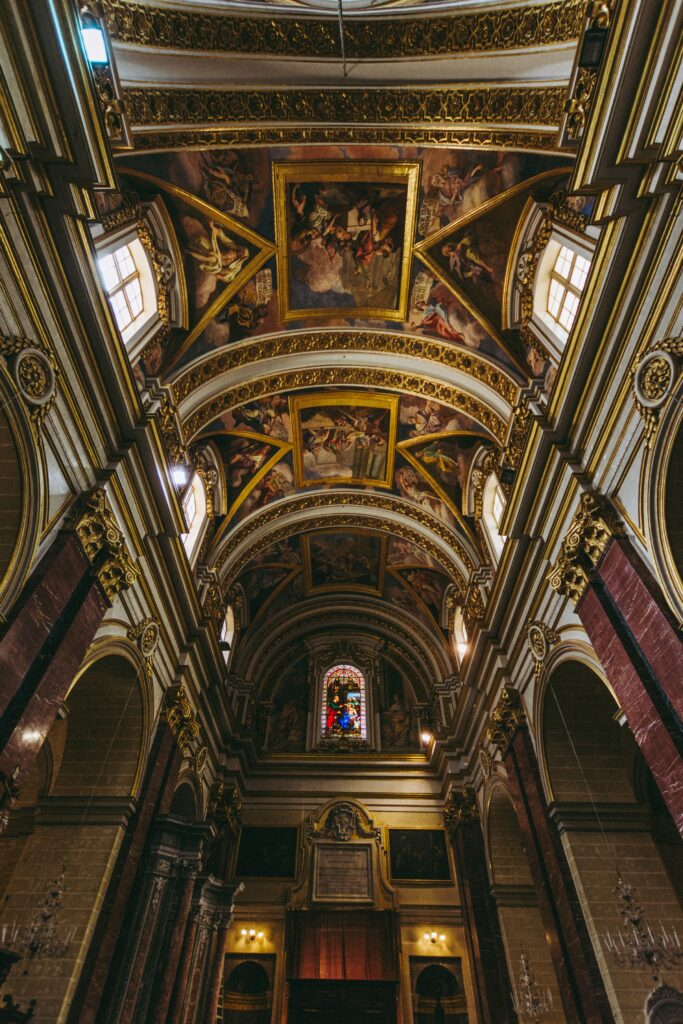

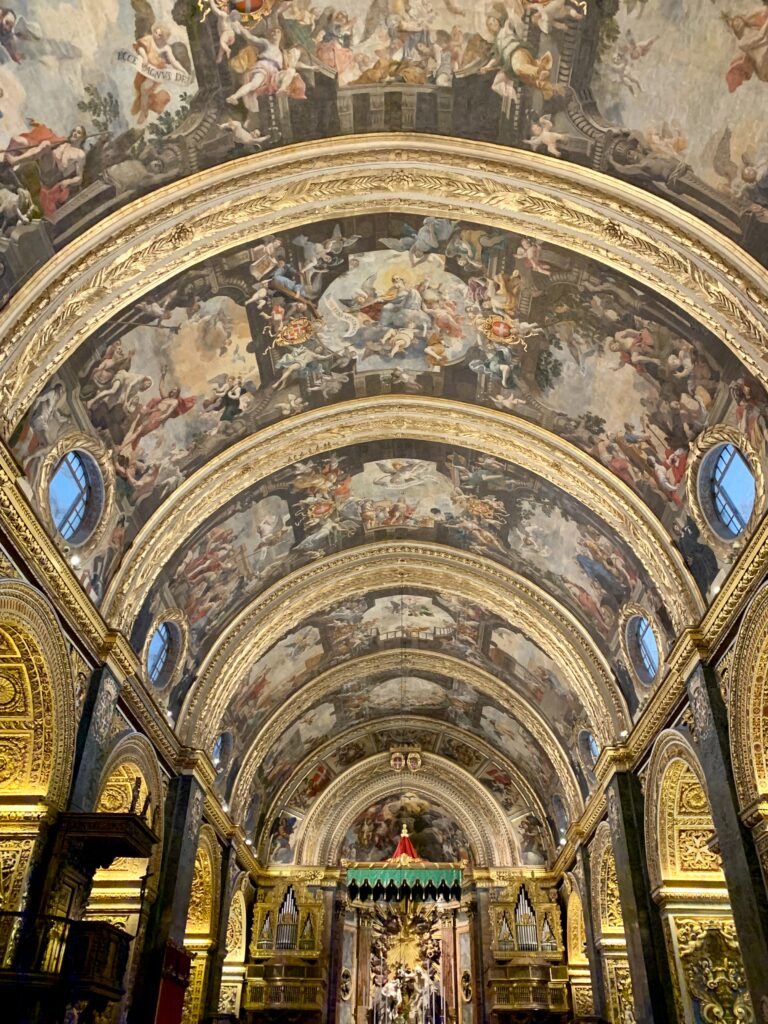
The central door is flanked by two Doric columns supporting the balcony from which the Grand Master spoke during important events. The facade is bordered by two bell towers, which give the building symmetry and balance. The interiors contrast with the moderation of the exterior. The central nave depicts some moments from the life of St. John the Baptist.
The floor is lined with marble and consists of about 400 tombs reserved for members of the Order. The tombstones are decorated with polychrome marble and depict the coats of arms of the knights and episodes of the life of each deceased, as well as epitaphs and allegorical events.
Arbitration Palace
Once it was the residence of the Grand Masters of the Order, and today the Maltese Parliament sits here. The office of the President of the Republic is also located here. This is one of the first palaces built in Valletta, it was built in 1571. Visiting this building is an experience not to be missed.

The rooms are decorated with precious ornaments, there are works of art, frescoes, and chiseled armor. The Arbitration Palace (also called simply the Palace) is located in the heart of Valletta and offers many architectural beauties. On the ground floor, we find the Council Hall, which houses a very rare collection of tapestries depicting hunting scenes.
Portraits of the Presidents of the Republic stand out in the State Dining Room, as well as a truly unusual Queen of Malta: Queen Elizabeth. Then, from the first floor, you can go to the armory: here we will admire the collection of more than 5,000 weapons dating from the period from 1500 to 1800.

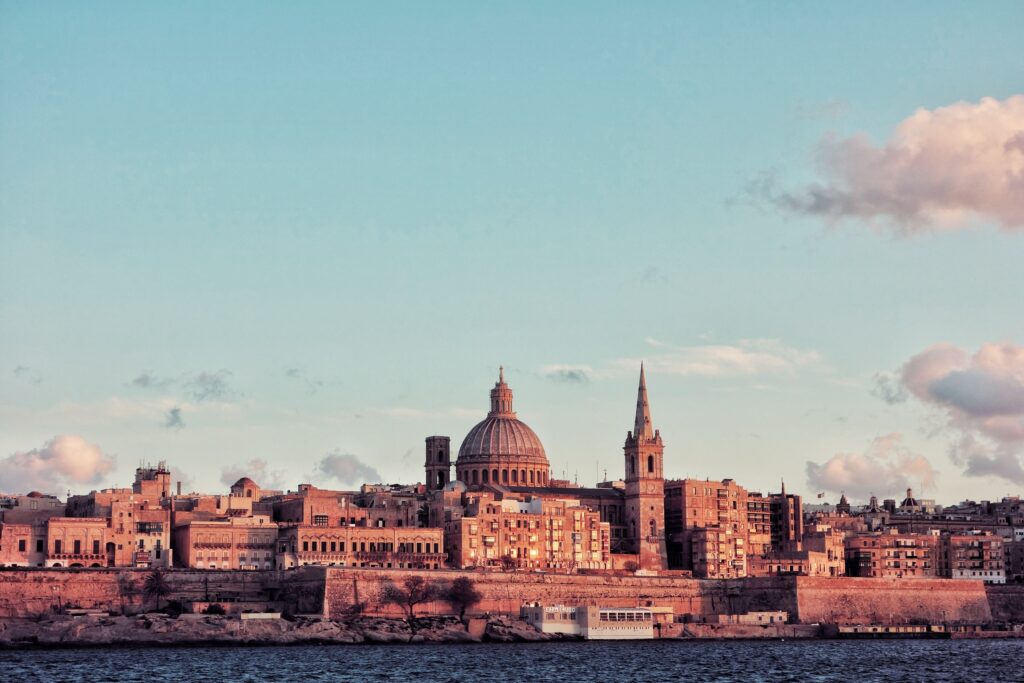
Initially, the collection included more than 25 thousand units that were stolen during the Invasion of the troops of French Napoleon. After visiting the palace, you can stroll through the garden and relax in a very beautiful green area. The changing of the guard takes place once a month.
Barracca Gardens
Located on the bastion, they represent the most beautiful gardens on the whole island of Malta. The panorama will give you a unique view of the port and the capital. In ancient times, it was a place where only knights could rest, but then it opened its doors to everyone, starting in 1800.
Besides statues and monuments, you will also find a frame full of trees, plants, and flowers. Under the gardens, there is a battery, which is a platform from which artillery shots were fired during the ceremonies. The tradition is still relevant today. Shots are fired twice a day: at noon and four o’clock in the afternoon.
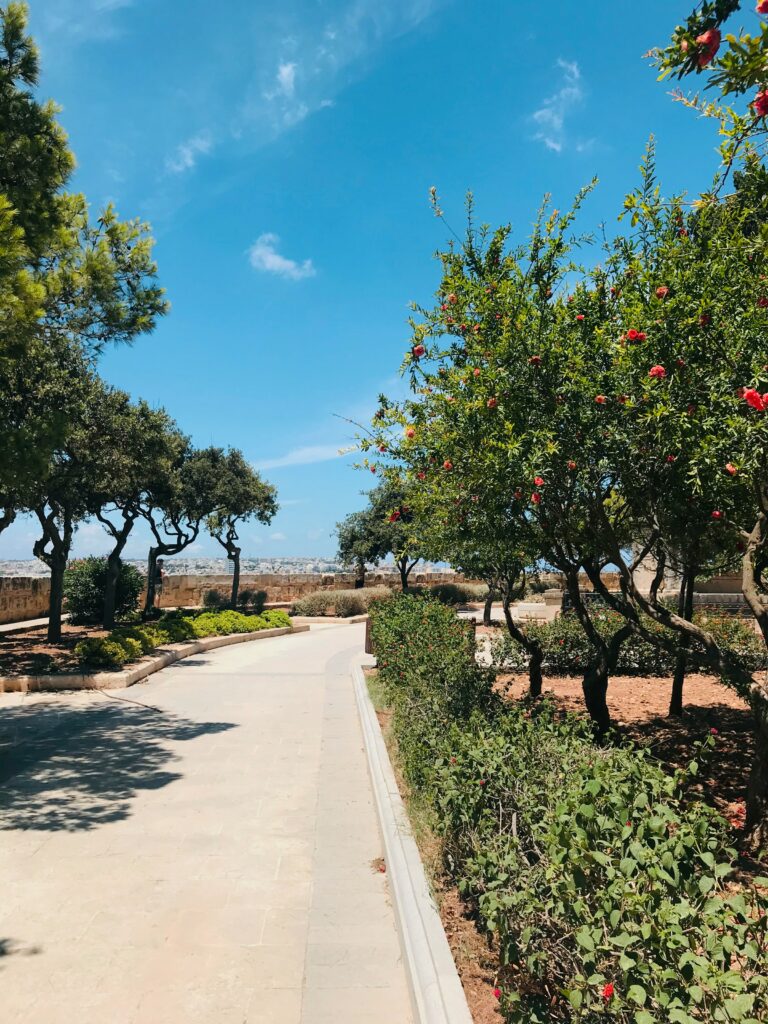
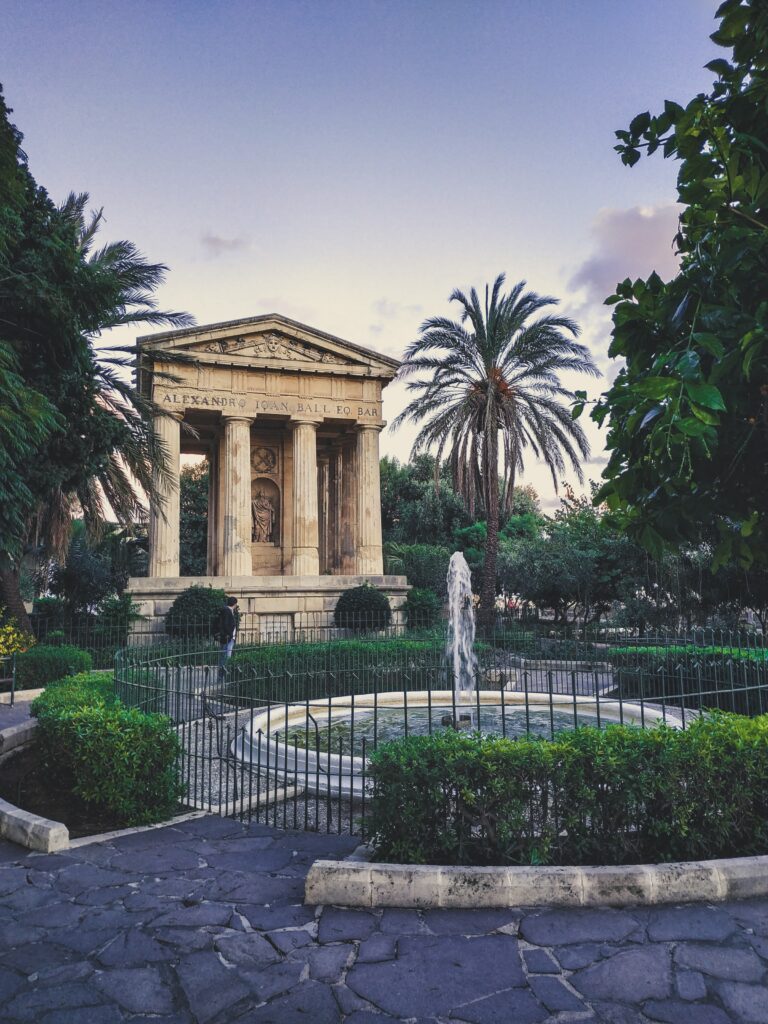
These upper gardens are located on the Peter and Paul Bastion. Visitors, in addition to enjoying the view, can relax on benches or in the middle of greenery, or among the arches. There are several works of art in the gardens, including a beautiful bronze sculpture by Maltese artist Antonio Shortino.
The lower gardens of Baracca offer even more relaxation and tranquility: They are located in the eastern part of the city and contain a neoclassical monument dedicated to Alexander Ball, the most beloved of British governors.
National Museum of Archaeology
In the center of Valletta, we can visit one of the most important museums in Malta, which will enchant us, starting from the place, an exquisite Baroque palace built in 1571 by order of the Knights of Malta. The collection is huge and starts in the prehistoric era to gets to the end of the Roman era.
Among the artifacts on display are two symbols of the island: the Sleeping Goddess and the Maltese Venus, two statuettes that are 5,000 years old. The museum was opened in 1958 and initially housed both an archaeological collection and an exhibition of classical painting, which was later moved to the National Museum of Fine Arts, which we will talk about later.

The collection of the Archaeological Museum is divided into two parts. On the ground floor, you can visit the prehistoric period, admiring the finds dating back to 2500 BC. Here you will find artifacts related to the first settlements that originated on the island, and you will approach the construction of temples. Prehistoric life is revealed through jewelry, stone tools, as well as images of animals and human figures. On the upper floors, collections are dating back to the Bronze Age and the Phoenician period.
Instead, the main hall of the museum houses finds from megalithic temples scattered throughout the island. There are original architectural elements with relative photographs that relate to the excavations. In the room dedicated to the Phoenician period, household items are presented along with other elements related to funeral rites, such as an anthropomorphic sarcophagus. Multimedia installations allow us to understand how fabrics were processed and dyed during this period.
Three cities
And here we are in one of the richest areas of history and charm in all of Malta. Birgu, Bormla, and Senglea were fortified towns of the island and were the scene of numerous clashes and battles. They are located opposite the capital Valletta, well protected by the bay.
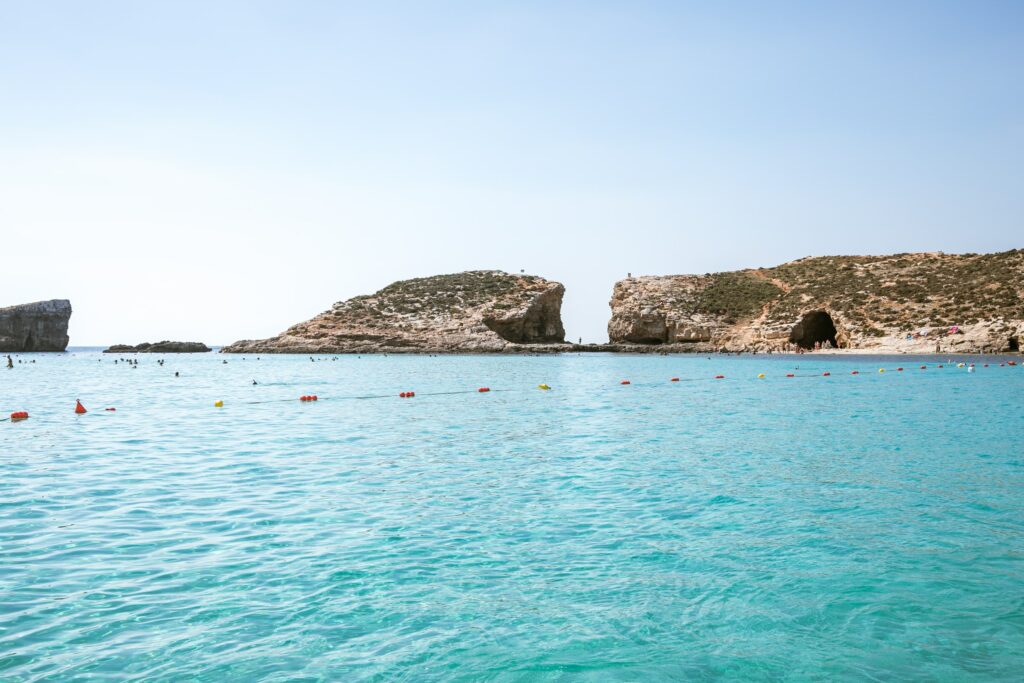

In Birgu, you can walk through history by visiting the city, which dates back to 1500. Among the entertainment, in addition to walking along the embankment, there is a visit to the Inquisitor’s Palace. Senglea, in addition to a past full of events, can offer a moment of relaxation in its gardens or thanks to glimpses that you will discover.
One of the symbols, of course, is the basilica, built-in 1580. The Bormla is the largest of the three and the one in the innermost position. He can count on two different fortifications, a unique charm and the Church of the Immaculate Conception, which is worth a visit.
Fort of St. Elmo
The monument in which the museum is located: Fort Sant’Elmo is located at the far end of the capital. It played a very important defensive function for Malta, especially during the Great Siege of Malta conducted by the Ottomans in 1565. The position was fortified by the Knights of the Order of St. John.
Now it also houses a Military Museum, which offers a very interesting path through the history of the island, from prehistoric times to the present day. The structure is divided into seven large zones. Of particular importance is the Second World War. There are several exhibits, including a Jeep used by General Eisenhower, and a Faith aircraft, a biplane that was used against the Italians.
Manoel Theatre
The Manoel Theater was built in 1731 thanks to one of the Grand Masters of the Order, Antonio Manoel de Vilegna. This is the National Theatre of Malta (the third oldest theatre in all of Europe), in which the Maltese Philharmonic Orchestra plays. It is a relatively small structure, accommodating about 600 seats in the oval hall.
There are three tiers of boxes built entirely of wood and decorated with golden leaves. The ceiling is very peculiar, it is blue and thanks to the Trompe D’Oeil technique looks like a kind of dome. The building had a very long history, was restored several times, and then lost its significance with the construction of the Royal Opera House.
In 1900, operettas and musical comedies in Italian, Maltese, and English were performed in the theater. Around the 1920s, due to the widespread distribution of cinema, it was used to show films. During the Second World War, it even became a shelter for internally displaced persons.
After important restoration work, it was reopened to the public in 1960. During the last reconstruction, carried out in 2004, precious paintings were discovered, the existence of which no one knew. A museum was created inside the building, telling about both the history of the Manoel Theater and the history of the Royal Opera House.
Rocca Piccola House
One of the last noble residences in Valletta, whose history dates back to 400 years ago, when the Knights of San Giovanni decided to build an exquisite and charming house that could rival the houses of the main European capitals.
Among the most interesting halls to admire, of course, is the Alta Hall, which also has some of the most valuable items in the building: from silverware to unique furniture. There are several portraits of the author on the walls. There is also an exquisite chapel in this building, where there are numerous relics, bowls, and other memorabilia.
The name of the house refers to the first owner, Don Pietro La Rocca. The family archive is very rich in documents and rarities. There are records, family memories, as well as a unique collection of chess pieces, the most valuable of which is made of ivory.
There is an antique clock in the study that counts down the clock with one hand and must be wound up at least three times a day. In the center of the studio, there is a showcase with silver medical instruments from 1700. The dining room is a striking example of the Art Nouveau style. The table is set with porcelain, silver, and French lace.
National Museum of Fine Arts
This is another of the symbolic museums of Valletta. The collection is divided into four thematic routes, located on three floors. The first line concerns the Mediterranean and is dedicated to Maltese art before British rule.
The exhibition space will introduce us to Baroque paintings. “Empire,” the second section, follows British rule and unfolds with maps, paintings, and multimedia stations. The third part is dedicated to Europe, while there is the last monographic space, which presents works and information about Antonio Shortino, a Maltese sculptor of the early 1900s.
The exhibition is a perfect combination of the past and the future in a very long journey, including more than 20 thousand exhibits. There are several rooms, one of which houses antique furniture and silver, and the second hosts’ temporary exhibitions. The permanent exhibition unites most of the Maltese collection, which began in 1923.
Among the artists, there are Mattia Preti, Guido Reni, and Salvator Rosa, as well as French, English, Dutch, Swiss and British artists. There are also several Maltese sculptors, and a significant place is devoted to landscape painting and a collection of old maps.













